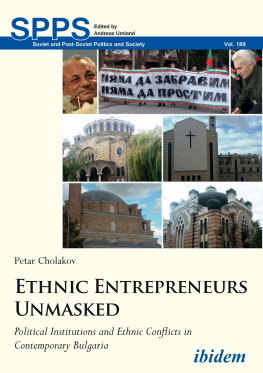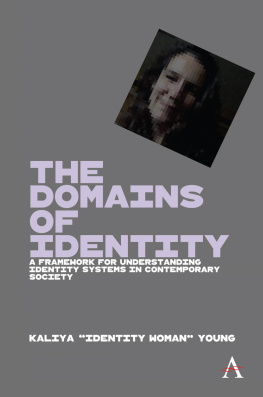MULTIFACETED IDENTITY OF INTERETHNIC YOUNG PEOPLE
Studies in Migration and Diaspora
Series Editor:
Anne J. Kershen, Queen Mary College, University of London, UK
Studies in Migration and Diaspora is a series designed to showcase the interdisciplinary and multidisciplinary nature of research in this important field. Volumes in the series cover local, national and global issues and engage with both historical and contemporary events. The books will appeal to scholars, students and all those engaged in the study of migration and diaspora. Amongst the topics covered are minority ethnic relations, transnational movements and the cultural, social and political implications of moving from over there, to over here.
Also in the series:
The Invisible Empire
White Discourse, Tolerance and Belonging
Georgie Wemyss
ISBN 978-0-7546-7347-7
Lifestyle Migration
Expectations, Aspirations and Experiences
Edited by Michaela Benson and Karen OReilly
ISBN 978-0-7546-7567-9
International Migration and Rural Areas
Cross-National Comparative Perspectives
Edited by Birgit Jentsch and Myriam Simard
ISBN 978-0-7546-7484-9
Accession and Migration
Changing Policy, Society, and Culture in an Enlarged Europe
Edited by John Eade and Yordanka Valkanova
ISBN 978-0-7546-7503-7
Migrant Women Transforming Citizenship
Life-stories From Britain and Germany
Umut Erel
ISBN 978-0-7546-7494-8
Multifaceted Identity of Interethnic Young People
Chameleon Identities
SULTANA CHOUDHRY
London Metropolitan University, UK
First published 2010 by Ashgate Publishing
Published 2016 by Routledge
2 Park Square, Milton Park, Abingdon, Oxon OX14 4RN
711 Third Avenue, New York, NY 10017, USA
Routledge is an imprint of the Taylor & Francis Group, an informa business
Copyright 2010 Sultana Choudhry.
Sultana Choudhry has asserted her right under the Copyright, Designs and Patents Act, 1988, to be identified as the author of this work.
All rights reserved. No part of this book may be reprinted or reproduced or utilised in any form or by any electronic, mechanical, or other means, now known or hereafter invented, including photocopying and recording, or in any information storage or retrieval system, without permission in writing from the publishers.
Notice:
Product or corporate names may be trademarks or registered trademarks, and are used only for identification and explanation without intent to infringe.
British Library Cataloguing in Publication Data
Choudhry, Sultana.
Multifaceted identity of interethnic young people:
chameleon identities. -- (Studies in migration and
diaspora)
1. Racially mixed children--Psychology. 2. Ethnicity in
children. 3. Identity (Psychology) in children. 4. Identity
(Psychology) in adolescence. 5. Identity (Psychology)-
Religious aspects. 6. Interracial marriage. 7. Racially
mixed children--Research.
I. Title II. Series
305.80083-dc22
Library of Congress Cataloging-in-Publication Data
Choudhry, Sultana.
Multifaceted identity of interethnic young people: Chameleon identities / by Sultana
Choudhry.
p. cm. -- (Studies in migration and diaspora)
Includes bibliographical references and index.
ISBN 978-0-7546-7860-1 (hbk.) -- ISBN 978-0-7546-9691-9 (ebook)
1. Ethnicity in children. 2. Ethnicity. 3. Racially mixed children--Race identity. 4. Racially
mixed people--Race identity. I. Title.
GN495.6.C52 2010
155.8405--dc22
2009045840
ISBN 978-0-754-67860-1 (hbk)
ISBN 978-1-315-59625-9 (ebk)
Contents
Series Editors Preface
A Multi-Faceted Identity of Mixed Race Children: A Masala Mosaic
List of Figures
List of Tables
Series Editors Preface
A Multi-Faceted Identity of Mixed Race Children: A Masala Mosaic
Human identity is neither static nor singular: it is multiple and constantly evolving. Identity construction begins in childhood, often in the first stages of primary school. The tools that enable us to construct who we are how we know ourselves and how we are known by others are selected from both our past and our present. To greater and lesser extents we are influenced by colour, language, place, race and religion, the balance determined by parenthood and community. We identify ourselves by difference, by recognising what we are by what we are not. For the non-white child one of the prime indicators of self-identity is colour; for others it might be religion and/or language. For the progeny of ethnic minorities the process of identity construction will be most strongly influenced by their minority status and separateness; parental and familial background and primary education providing the foundations. However, for the children of interethnic partnerships the construction and maintenance of identity is far more complex and, at times, when external influences conflict, confusing. Although an increasingly significant constituent of contemporary migration and diasporic life, as the author of this pioneering volume points out, in the sphere of social studies the recognition of otherness and the corresponding construction of self-identity by interethnic children is one that has been, at best, under-researched.
In this fascinating and original study Sultana Choudhry highlights the intricacies of identity formation for the mixed race or interethnic child. While she acknowledges that there has been some work carried out into the progeny of interethnic relationships, she emphasises that these have focused on black (as in African-American or African-Caribbean) and white unions, rarely if at all on Asian and White or Asian and Black. This book sets out to redress the balance. From the authors in-depth interviewing of both parents and children, the stages, confusions and pressures of interethnic identity formulation are identified. There is no doubt that for the offspring of an Asian/White relationship the overriding determinants of identity are religion, colour and language. In the case of the former, whilst for some it is Islam which is the most powerful in the construction of self-identity for others the chameleon role comes into play. As one interviewee explains: (W)hen I am with Muslim friends I tell them Im Muslim but when I am with white friends I take on my mums side of things more, you know Christian. However, it is colour which presents the instant source of identification for the onlooker. Those that can identify both with the mainstream and with a minority ethnic group appear to take most advantage of, what the author terms, situational or chameleon identity. To paraphrase the words of one interviewee: When I am with whites I identify as white, but when I am with my Asian friends I talk and act like an Asian.
A reading of this book encourages the reader to explore identity formation in a new context, one which incorporates the psychological and physical issues interethnics confront. To this end, insights into the chameleon persona have been facilitated by an individual who, at the present time, is the most well-known chameleon of all Barack Obama. The author has no doubt that the incumbent President of the United States has carefully weighed up the pros and cons of situational identity and has, as Choudhry concludes, come down on the side of that which has provided him with accession to the most coveted political position in the modern world. At last chameleons have a role model par excellence.




